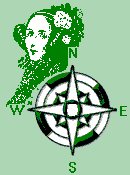Programming in .NET military style
 | It seems like the .NET platform happened to be a nice innovation test bed. Mary Jo Foley talks about the “Sharps”, the growing cloud of experimental programming languages (A#, Cocoa#, F#, Gtk#, J#, Sing#, Spec#, X#) that range from data oriented (X# or C Omega) to functional programming (F#, my favorite) to operating system construction (Sing#). What all this has to do with the title? Some thirty years ago, the American army figured that its contractors were using too many programming languages (well over 400) so they had a real Tower of Babel. What to do? Well, in pure military fashion they formed a committee to choose the best programming language, the committee decided that no existing programming language deserved the label so that, in order to eliminate the excess of programming languages in use, they decided to create another one: Ada. Ada saw the light in 1980 and, for a while, the Department of Defense tried to force its contractors to use nothing but Ada, in the end they had to abandon the rule, even though the initiative did give fruit: from over 400 languages used they went down to less than 40, nice try indeed. What does all this have to do with .NET? Well, one of the "sharps", A#, is an implementation of Ada in .NET and, to be honest, this is not even news, A# has been alive since 2004 and its latest version (June 2006) works only on .NET 2.0. So if you feel like programming in .NET military style, you can use A# (as for me, I have my hands full with C# and F#). |